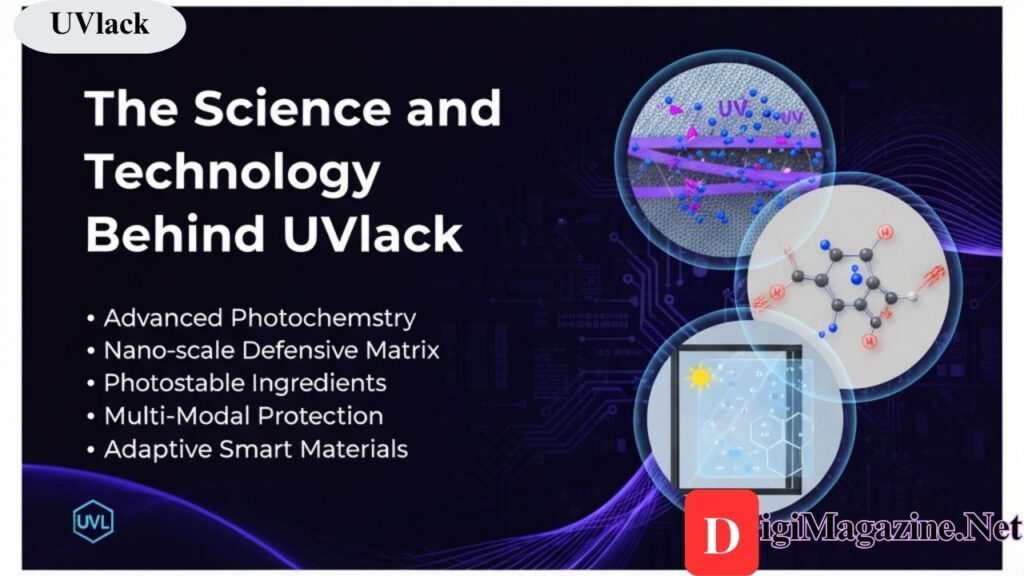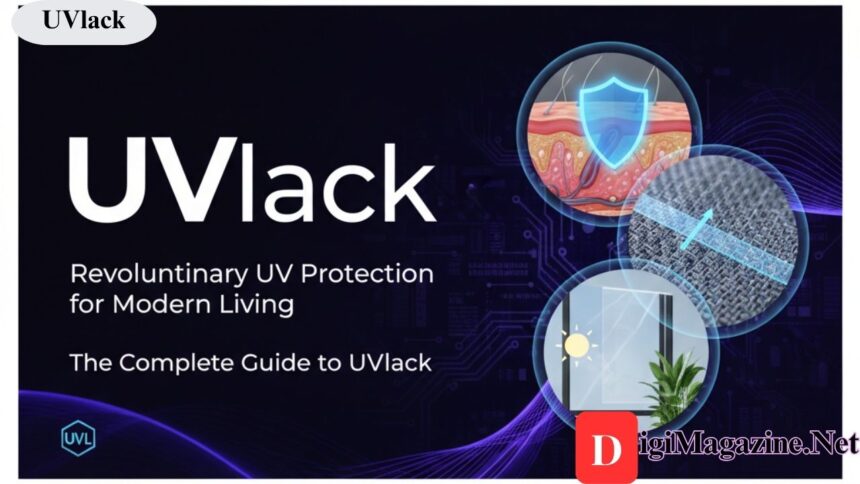What is UVlack?
In today’s climate-conscious and skin-aware society, the term UVlack is quickly becoming a recognized label for a new era of ultraviolet protection. At its core, UVlack refers to a class of advanced technologies and materials designed to block, reflect, or neutralize harmful ultraviolet (UV) radiation. Unlike traditional sunscreens or tinted films, UV lack encompasses a wide spectrum of applications, ranging from high-performance skincare and UV-resistant fabrics to transparent architectural coatings and environmentally friendly solutions.
The innovation behind UVlack represents a significant leap forward in how individuals and industries approach sun protection. Rather than relying solely on chemical barriers or physical blockers, this technology integrates multiple protective mechanisms that work synergistically to provide comprehensive defense against both UVA and UVB rays.
Understanding UVlack – Definition, Purpose, and Scope
The definition of UVlack extends beyond simple UV filtration. It encompasses a sophisticated system of protective technologies that address the growing need for effective, sustainable, and versatile ultraviolet defense. The primary purpose of UV lack is to create invisible shields that preserve skin health, extend material longevity, and reduce environmental impact.
The scope of UVlack applications is remarkably broad. From personal care products that prevent premature aging to industrial coatings that protect sensitive equipment, this technology serves multiple sectors simultaneously. Medical professionals, dermatologists, and material scientists have collaborated to develop UV lack solutions that meet the diverse needs of modern consumers and businesses.
What sets UVlack apart from conventional UV protection methods is its adaptive nature. The technology can be customized for specific wavelength ranges, intensity levels, and application environments. Whether integrated into clothing fibers, applied as transparent window treatments, or formulated into lightweight skincare products, UV lack maintains consistent protective performance without compromising aesthetics or functionality.
Why UV Protection Is More Important Than Ever Before

The urgency surrounding UV protection has intensified dramatically in recent years. Climate change has contributed to the thinning of the ozone layer in certain regions, resulting in increased ultraviolet radiation reaching the Earth’s surface. This environmental shift has direct consequences for human health, with rising rates of skin cancer, accelerated photoaging, and increased risk of eye damage.
Beyond health concerns, UV exposure affects infrastructure and materials. Plastics degrade, paints fade, and fabrics deteriorate when subjected to prolonged ultraviolet radiation. The economic cost of replacing UV-damaged materials runs into billions annually across industries. UVlack technology addresses these multifaceted challenges by providing proactive protection that prevents damage before it occurs.
Awareness about the dangers of UV radiation has grown substantially among consumers. People now understand that sun damage is cumulative and that protection should begin early in life. The demand for effective, easy-to-use UV defense solutions has created a market where UV lack innovations can thrive and evolve rapidly.
The global increase in outdoor recreational activities has further elevated the importance of reliable UV protection. As more individuals engage in hiking, beach activities, and outdoor sports, the need for durable, long-lasting protective technologies becomes paramount. UVlack fills this gap by offering solutions that withstand physical activity, water exposure, and extended wear periods.
The Science and Technology Behind UVlack

The scientific foundation of UVlack rests on advanced photochemistry and material engineering. At the molecular level, UV lack incorporates specially designed compounds that interact with ultraviolet photons. These compounds either absorb harmful radiation and convert it to harmless heat energy or reflect UV waves away from protected surfaces.
One of the breakthrough aspects of UVlack technology involves nano-scale particles that create a defensive matrix. These microscopic structures form a three-dimensional network that scatters UV radiation while allowing visible light to pass through unobstructed. This selective filtration ensures that protection doesn’t compromise clarity or brightness in applications like window coatings or eyewear.
The chemistry behind UV lack also incorporates photostable ingredients that resist degradation over time. Traditional UV filters can break down when exposed to sunlight, reducing their effectiveness. In contrast, UVlack formulations maintain their protective properties through extended exposure periods, offering consistent defense throughout their intended lifespan.
Research into UVlack has revealed that combining multiple protective mechanisms yields superior results. By layering physical barriers with chemical absorbers and reflective surfaces, the technology achieves broad-spectrum protection that addresses the full range of harmful ultraviolet wavelengths. This multi-modal approach represents a significant advancement over single-mechanism protection methods.
Recent developments in smart materials have enabled UV-resistant products to respond dynamically to environmental conditions. Some formulations darken or adjust their protective intensity based on UV exposure levels, providing optimal defense without unnecessary heavy-duty protection during lower-risk periods. This adaptive capability enhances user comfort while maintaining safety standards.
Real-World Applications of UVlack Across Key Industries

The versatility of UVlack has led to its adoption across numerous industries, each benefiting from the technology’s unique protective capabilities. In the automotive sector, UV lack coatings protect vehicle interiors from fading and deterioration while reducing heat buildup inside passenger compartments. Dashboard materials, upholstery, and electronic displays all benefit from this invisible protective layer.
Architectural applications represent another significant use case for UVlack technology. Modern buildings incorporate window treatments and glass coatings that block harmful UV radiation while maintaining transparency and natural light transmission. These installations protect interior furnishings, artwork, and building materials from sun damage, extending their lifespan and reducing maintenance costs.
The healthcare industry has embraced UV lack innovations for medical equipment and protective gear. Surgical instruments, diagnostic devices, and patient monitoring systems all require protection from UV-induced degradation. Additionally, medical-grade fabrics treated with UVlack provide healthcare workers with enhanced protection during outdoor medical interventions.
Consumer electronics manufacturers integrate UVlack into device screens and casings to prevent yellowing and material breakdown. Smartphones, tablets, and outdoor displays benefit from this protective technology, which helps maintain product appearance and functionality over extended periods of use.
Agricultural applications of UV lack include greenhouse coverings and protective films for crops. These specialized materials allow optimal light spectrum transmission for plant growth while blocking harmful ultraviolet wavelengths that can damage delicate plants and reduce agricultural yields.
UVlack vs Traditional Sunscreen and UV Filters
Comparing UVlack to traditional sunscreen reveals several distinct advantages. Conventional sunscreens require frequent reapplication, especially after water exposure or perspiration. In contrast, UV lack technologies integrated into fabrics or applied as durable coatings maintain their effectiveness without constant renewal.
Traditional UV filters often leave visible residue, create sticky textures, or cause skin irritation in sensitive individuals. UVlack formulations designed for skincare applications prioritize lightweight textures and non-comedogenic properties, making them suitable for daily use across various skin types.
The environmental concerns associated with chemical sunscreens have prompted regulatory scrutiny in recent years. Certain UV filter ingredients harm coral reefs and aquatic ecosystems when washed into waterways. UV lack technologies offer reef-safe alternatives that provide effective protection without ecological consequences.
Durability distinguishes UVlack from standard sunscreen products. While traditional sunscreens wear off through friction and environmental exposure, properly applied UV lack treatments maintain their protective properties through multiple wear cycles. This longevity translates to better value and more reliable protection for users.
However, it’s important to note that UVlack and traditional sunscreen aren’t mutually exclusive. Many dermatologists recommend using both approaches simultaneously—wearing UV lack-treated clothing and accessories while applying sunscreen to exposed skin areas—for comprehensive protection against ultraviolet radiation.
Skincare Innovation and Anti-Aging Benefits of UV lack
The integration of UVlack into skincare formulations has revolutionized anti-aging approaches. Dermatological research consistently identifies UV radiation as the primary cause of premature skin aging, including wrinkles, age spots, and loss of elasticity. By incorporating UV lack technology into daily skincare routines, individuals can significantly reduce photoaging effects.
Modern UVlack skincare products combine protective ingredients with nourishing compounds that support skin health. Antioxidants, peptides, and hydrating agents work alongside UV lack components to create comprehensive skin defense systems. This holistic approach addresses both prevention and repair, offering superior results compared to single-function products.
Clinical studies have demonstrated that consistent use of UV lack-enhanced skincare leads to measurable improvements in skin texture, tone, and overall appearance. Participants using these products show reduced signs of sun damage, including fewer dark spots and more even pigmentation. The anti-aging benefits extend beyond surface-level improvements to include cellular-level protection.
The lightweight nature of advanced UVlack formulations makes them ideal for daily use under makeup or as standalone protection. Unlike heavy traditional sunscreens that can interfere with cosmetic application, these innovative products absorb quickly and create smooth, primed surfaces suitable for layering with other skincare and makeup items.
Dermatologists increasingly recommend UV lack products as foundational elements in preventive skincare regimens. Starting protection early in life yields the most significant long-term benefits, as cumulative UV damage proves difficult to reverse once established. The accessibility and ease of use associated with UVlack technologies encourage consistent protective habits.
UVlack in Fashion – Sun Protection Meets Style
The fashion industry has enthusiastically adopted UVlack technology, recognizing that sun protection and style need not be mutually exclusive. Modern clothing lines incorporate UV lack-treated fabrics that offer high protection ratings without sacrificing aesthetics, comfort, or design versatility.
Athletic wear brands have been particularly innovative in utilizing UV lack technology. Performance fabrics for outdoor sports now routinely include integrated UV protection that withstands intense activity, moisture, and repeated washing. Athletes benefit from reliable defense against sun exposure during extended training sessions and competitions.
Swimwear represents another category where UVlack has made a significant impact. Traditional beachwear offers minimal UV protection, leaving swimmers vulnerable to intense sun exposure. New generation swimsuits incorporate UV lack fibers that provide substantial protection while maintaining the flexibility, quick-drying properties, and attractive designs that consumers expect.
High-fashion designers have discovered that UV lack treatments don’t compromise fabric drape, color vibrancy, or texture. Luxury brands now offer elegant collections featuring integrated UV protection, appealing to style-conscious consumers who prioritize both fashion and health. This convergence of aesthetics and functionality represents a significant shift in how the industry approaches sun-protective clothing.
Accessories, including hats, scarves, and gloves treated with UVlack, provide additional protective options for fashion-forward individuals. These items complement clothing-based protection while offering versatile styling options suitable for various occasions and settings.
Environmental Impact and Sustainability of UV lack
The environmental profile of UVlack technology aligns with growing consumer demand for sustainable solutions. Unlike chemical sunscreens that wash into waterways and harm marine ecosystems, properly formulated UV lack products minimize environmental footprint through biodegradable ingredients and reduced runoff.
Manufacturing processes for UV lack materials increasingly emphasize energy efficiency and waste reduction. Advanced production methods require less water and generate fewer emissions compared to traditional UV filter manufacturing. This cleaner production approach appeals to environmentally conscious consumers and businesses seeking to reduce their ecological impact.
The durability of UVlack applications contributes to sustainability by reducing replacement frequency. Products and materials protected by UV lack technology last longer, decreasing the demand for new production and reducing overall resource consumption. This extended lifespan represents a significant sustainability advantage across multiple applications.
Recyclability considerations factor into modern UVlack product design. Manufacturers develop formulations compatible with existing recycling streams, ensuring that UV-lack-treated materials don’t complicate end-of-life processing. This attention to circular economy principles enhances the overall environmental credentials of the technology.
Research into bio-based UV lacks ingredients continues to advance, with scientists exploring plant-derived compounds that offer effective UV protection without petroleum-derived chemicals. These natural alternatives promise even greater sustainability while maintaining the performance standards that users expect from protective technologies.
Smart Technology and the Digital Future of UV lack
The convergence of UVlack with digital technology is creating intelligent protection systems that adapt to user needs and environmental conditions. Wearable devices now incorporate UV sensors that monitor exposure levels and provide real-time feedback about when additional protection becomes necessary.
Smartphone applications integrated with UV lack products help users track their sun exposure, maintain protection schedules, and receive alerts about high UV index conditions. This connectivity transforms passive protection into active health management, empowering individuals to make informed decisions about their sun safety behaviors.
Smart fabrics incorporating UV lack technology can change their protective intensity based on detected UV levels. These adaptive materials darken or alter their structure when exposed to higher radiation levels, providing enhanced defense during peak sun exposure periods while remaining comfortable during lower-risk times.
Augmented reality applications allow consumers to visualize UV protection coverage before purchasing UVlack products. Virtual try-on experiences help individuals understand how clothing, accessories, or skincare items will protect specific body areas, facilitating more informed purchasing decisions.
The Internet of Things (IoT) integration enables UV lack products to communicate with home automation systems, adjusting window treatments or alerting users to apply additional protection based on weather forecasts and real-time UV measurements. This seamless integration into daily life makes comprehensive sun protection more accessible and automatic.
Limitations and Challenges of UV lack
Despite its numerous advantages, UVlack technology faces certain limitations that manufacturers and users should understand. Cost represents a significant barrier for some consumers, as advanced UV lack products often carry premium price points compared to traditional alternatives. However, the long-term value and durability may justify the initial investment for many users.
Application complexity can pose challenges in certain contexts. While skincare UVlack products apply as easily as conventional lotions, industrial applications may require specialized equipment or professional installation. This complexity can slow adoption in some sectors despite the clear benefits of the technology.
Standardization across the UV lack industry remains incomplete. Different manufacturers use varying testing methods and protection ratings, making it difficult for consumers to compare products accurately. Industry-wide standards would facilitate more informed purchasing decisions and increase overall consumer confidence.
The effectiveness of UV lack can vary based on application method and environmental factors. Improperly applied coatings may leave gaps in protection, while extreme temperatures or chemical exposures might degrade some UVlack formulations faster than expected. Users need clear guidance on proper application and maintenance to achieve optimal results.
Public awareness about UVlack technology lags behind its development. Many potential users remain unfamiliar with the benefits and applications of UV lack, limiting market growth and slowing widespread adoption. Educational initiatives targeting both consumers and industry professionals could accelerate acceptance and utilization.
Who Should Consider UV lack?
Individuals with fair skin, a history of sunburns, or a family history of skin cancer represent prime candidates for UVlack products. These high-risk groups benefit significantly from the comprehensive, long-lasting protection that UV lack technology provides.
Outdoor enthusiasts, including hikers, cyclists, runners, and water sports participants, should seriously consider incorporating UV lack into their gear and skincare routines. The durability and performance of these products make them ideal for active lifestyles where traditional sunscreen may prove impractical or insufficient.
Parents seeking effective sun protection for children find UV lack particularly valuable. Child-friendly clothing and accessories treated with this technology provide worry-free protection during outdoor play, beach trips, and summer activities. The long-lasting nature of UV lack reduces the need for frequent reapplication, simplifying child sun safety management.
Professionals who work outdoors, including construction workers, landscapers, and delivery personnel, face daily UV exposure that accumulates over time. UVlack-enhanced work clothing and protective gear offer practical solutions that integrate seamlessly into existing safety equipment without adding burden or discomfort.
Anyone committed to preventive healthcare and anti-aging skincare should explore UV lack options. The technology’s proven effectiveness in reducing photoaging and preventing sun damage makes it a valuable component of comprehensive wellness strategies focused on long-term health outcomes.
Final Thoughts
The emergence of UVlack technology represents a significant milestone in humanity’s ongoing effort to protect against harmful ultraviolet radiation. By combining scientific innovation with practical applications across multiple industries, UV lack offers solutions that address real-world challenges while supporting environmental sustainability.
As awareness grows and technology continues advancing, UVlack will likely become increasingly integrated into everyday products and materials. The transition from niche applications to mainstream adoption depends on continued research, improved accessibility, and effective education about the benefits of this protective technology.
The future of UV lack looks promising, with ongoing developments in smart materials, bio-based ingredients, and digital integration expanding the possibilities for UV protection. As climate change continues affecting UV exposure levels globally, technologies like UVlack will play crucial roles in safeguarding public health and preserving material integrity.
For individuals and organizations seeking effective, sustainable, and versatile UV protection, UVlack presents compelling advantages over traditional methods. The investment in this technology yields returns through improved health outcomes, extended product lifespans, and reduced environmental impact—benefits that align with contemporary values and priorities.
For more information, visit Digi Magazine.







